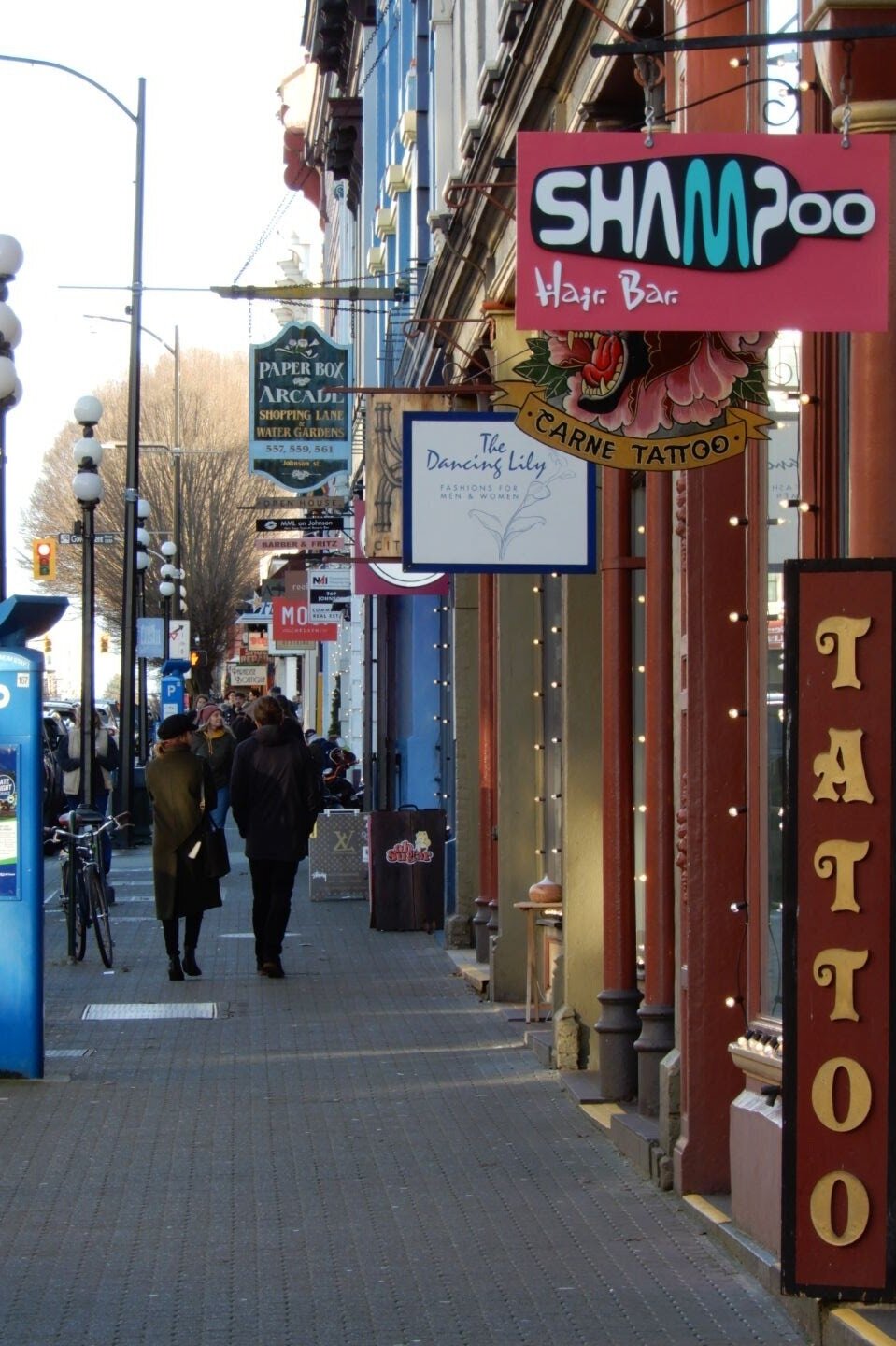Small Is Best! Or How to Create a Successful Shopping District!
Many people are lamenting the loss of the downtown Gap store, saying that it further signifies the decline of shopping in Victoria. When I have heard this recently, I keep wondering if these people have even gone shopping in downtown Victoria in the last couple of years, because the downtown that I see is thriving when it comes to shops. Are we seeing some large retailers leave? No doubt, but they are usually just the local casualty of a nationwide collapse. When a large retailer leaves however, its absence generally takes up a larger part of our collective experience just because of the large space it used to occupy. A knock on problem is that large space is going to be hard to fill unless another large national brand can be found to fill it. Government Street, where the Gap was, is likely the worst place for it to happen as it is among the most expensive commercial space in the city. Few local shops are going to have the ability to pay for it.
One more general observation about the retail health in downtown; if I compare it to when I first moved to Victoria in the mid-90’s. At that time there seemed to be a large amount vacant commercial across the city. In the ensuing 25 years, the sheer amount of commercial space that exists in the city must have increased by 15 to 20 percent, though that is just a complete guess, still it has certainly increased when you consider the amount of buildings that have been built and that many of them have ground floor commercial space. With that in mind, the amount of commercial ventures across the city must be much larger than it was then and that is despite the perpetual bogeyman of online shopping.
If you want to look where shopping is thriving there are a couple of great places downtown. Two of my favourite areas to walk around are the Blanshard and Fort Food Market and LoJo (Lower Johnson). Both of these shopping areas are full of a ridiculously large total amount of shops, with a great variety amongst all those stores and restaurants. When you look at the shops you will notice something about them as well, they are almost completely local one-of-kind businesses. When you compare either of these two strips in Victoria to Government Street or perhaps Robson in Vancouver what makes them different is the size of the stores. The ones on Fort or Johnson are significantly smaller than most commercial spaces along those larger shopping streets. Shopping and food districts with small commercial spaces have a few big benefits.
A series of small shops along Fort Street.
Variety - If you have a shopping district that is only a couple of blocks long like LoJo is and if it had large format stores, there would only 10 stores to visit. But because each of the stores are smaller there are a lot more of them. This gives shoppers a larger selection of stores to visit in a smaller amount of space.
Cheaper Rent / More Whimsical Stores - Because each of the stores has a smaller footprint than some of the larger chain stores you might find along a more major street, the commercial rental cost is going to be lower. The square footage cost may be higher, but because the stores are smaller they will still be cheaper to rent. One of the benefits of small format commercial districts is that because there is a lower barrier to entry for the store owner, they are sometimes willing to take more of a risk than they would if they were trying to appeal to a larger demographic as they would need to if they were paying a larger rental cost. This means that you will often get stores that you will never see in a larger format store.
Locally owned - While not universal, smaller stores tend to be locally owned because national chains need a larger space so that they can move enough product to make a profit over and above their distribution and broader administration. A locally owned store will not have these costs and thus can make a reasonable amount of money with a smaller footprint. This again means that you will have variety but it also means that visitors to your town may find stores that are nothing at all like the stores they have back home. Too often when you travel to another city and stick to the tourist shopping area, you will just see a series of the same stores as back home in the mall.
Little shops along Johnson Street
While there is more to a successful shopping district than just making the stores small, size is one of the most significant ingredients and too often you see new buildings being proposed with just one or two large commercial spaces rather than five or six small ones. I recognise that it is more work for the building owner to have more tenants, but the benefit of creating vibrant texture to the city streetscape will pay off in the long run in that you will likely not lose all your tenants all at once and when you do there will be a larger amount of potential tenants to draw on.
On top of store size, you need customers so a healthy density of locals living and working nearby plus a good mix of visitors is a must. You also need the area to be safe for those that are visiting the area. Lots of shopping areas can have both of these things though which is why the size of the stores is such a unique and necessary ingredient.
What are some of your favourite areas in the city with small format commercial?

